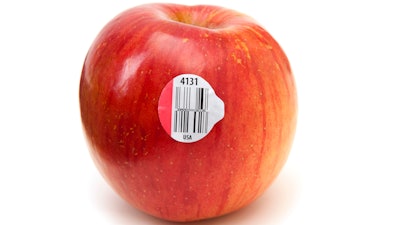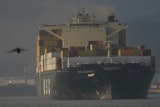
Whether you’re a small business or a company whose reach spans worldwide, barcode labeling is a critical aspect in the food industry. Many food manufacturers are implementing new technology so suppliers can meet regulatory and safety standards that enable better supply chain visibility. Here’s a deeper dive into how your barcode labeling environment can help improve traceability and security through the food supply chain.
Incorrect labels are the number one cause of food recalls. Establishing role-based user permissions throughout your labeling environment is an efficient way to prevent recalls and ensure a consistent process is followed every time a label is generated. Label security and traceability software allows the person who manages labels to view and approve each one, ensuring no unauthorized labels enter production.
The FDA’s Food Safety Modernization Act (FSMA) is a regulation focused on shifting efforts to prevent food recalls, as opposed to responding to them. Label management software helps food manufacturers comply with this regulation and other industry standards by giving the labeling process a series of checks and balances to ensure no incorrect labels are printed in the first place.
 iStock
iStock
With the shift to remote work, food manufacturers are transitioning to a paperless label approval process to replace manual interaction. By implementing this in their labeling process, food manufacturers can create a green & sustainable environment, setting themselves up for success now and into the future. You can achieve a paperless approval process in your labeling environment by:
- Setting a multi-stage approval process of label designs by reviewers.
- Establishing permissions to control access (design, print, and approve).
- Record of changes, comments, revisions, and print history for every label.
- Use centralized label management, browser-based printing to improve compliance and traceability.
Centralized label management combines label design, label traceability, and print automation to help meet customer requirements and industry or regulatory compliance standards, such as FSMA and food allergen labeling regulations like the U.S. Food Allergen Labeling and Consumer Protection Act (FALCPA), and the EU Food Information for Consumers provision (FIC).
These regulations aim to standardize barcode labels on food packages, better trace products through the food supply chain, and improve consumer safety. Companies with many suppliers can leverage browser-based label printing to enable multiple parties in the supply chain to print labels from one secure location. Centralized label management provides supply chain security and the ability to print labels to a virtually unlimited number of printers.
A cloud-hosted label printing interface is ideal for standardizing label printing at multiple locations that are on different networks. For example, a large retailer uses TEKLYNX cloud-hosted label printing for real-time printing of pre-approved label templates in producing discounts on in-store merchandise. For companies with small IT departments, cloud-hosted label printing takes the burden off internal resources.
 iStock
iStock
Integrating your label printing software with your ERP or WMS system can also minimize errors, increase print speeds, and maximize your return on investment. By triggering print jobs directly from your ERP system and generating print-time data directly from that system, instead of manually entering critical data, you create fewer steps and reduce the risk of generating inaccurate labels.
Your barcode labeling environment should allow you to connect to devices like barcode scanners and scales, to automatically trigger print jobs with the variable data captured by the device. Once an item is scanned or weighed, a label is automatically printed, eliminating manual processes and ensuring accurate food labels.
To help improve barcode labeling efficiencies for food security and traceability, your barcode labeling should do the following for you:
- Support database integration to populate variable data from your ERP, WMS, or other systems.
- Import high-resolution artwork and leverage with dynamic barcodes and variable data.
- Contain barcode creation wizards for 1D & 2D barcodes.
- Radio Frequency Identification (RFID) tag type support.
- Feature secure label approval processes, label change tracking and print history.
- Offer WYSIWYG (What You See is What You Get) printing.
- Automatically trigger printing directly from scales, scanners, or other devices.
By leveraging your barcode labeling environment to improve food security and traceability, you can control access to label files by establishing user-based permissions, implement a multi-stage approval process and keep record of changes, comments, revisions and print history for every label. Label security and traceability can effectively support food manufacturers who are re-tooling or facing new labeling regulatory and compliance standards for the first time.
TEKLYNX International Enterprise Product Manager Nick Recht specializes in designing enterprise-level labeling software solutions that integrate into existing ERP systems, resulting in wide-scale operational and labeling improvements. To learn more go to TEKLYNX.com.






















